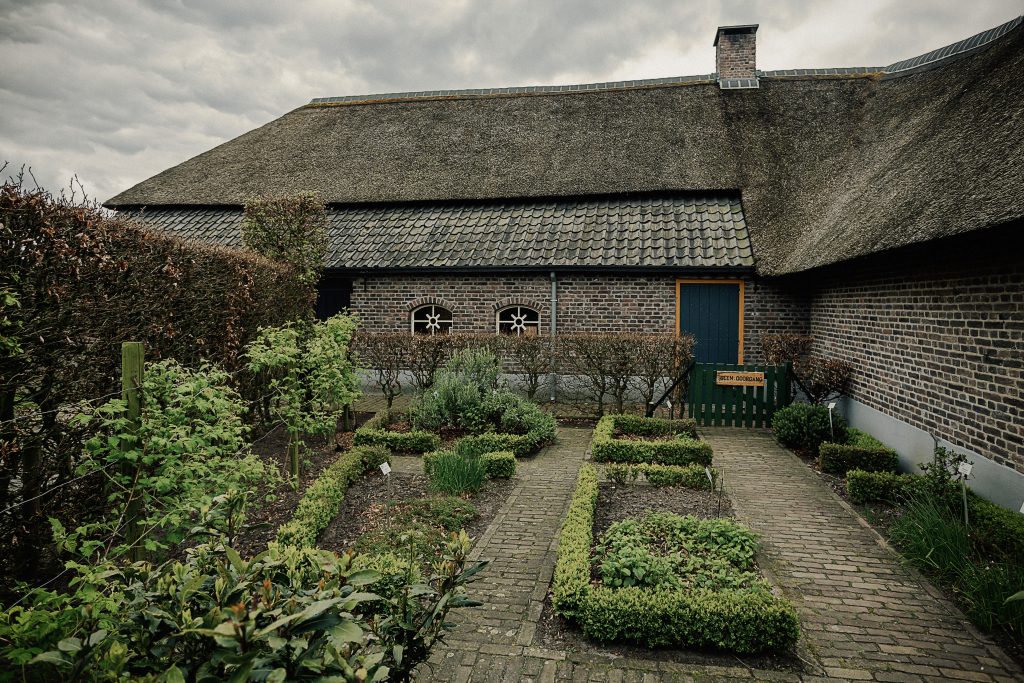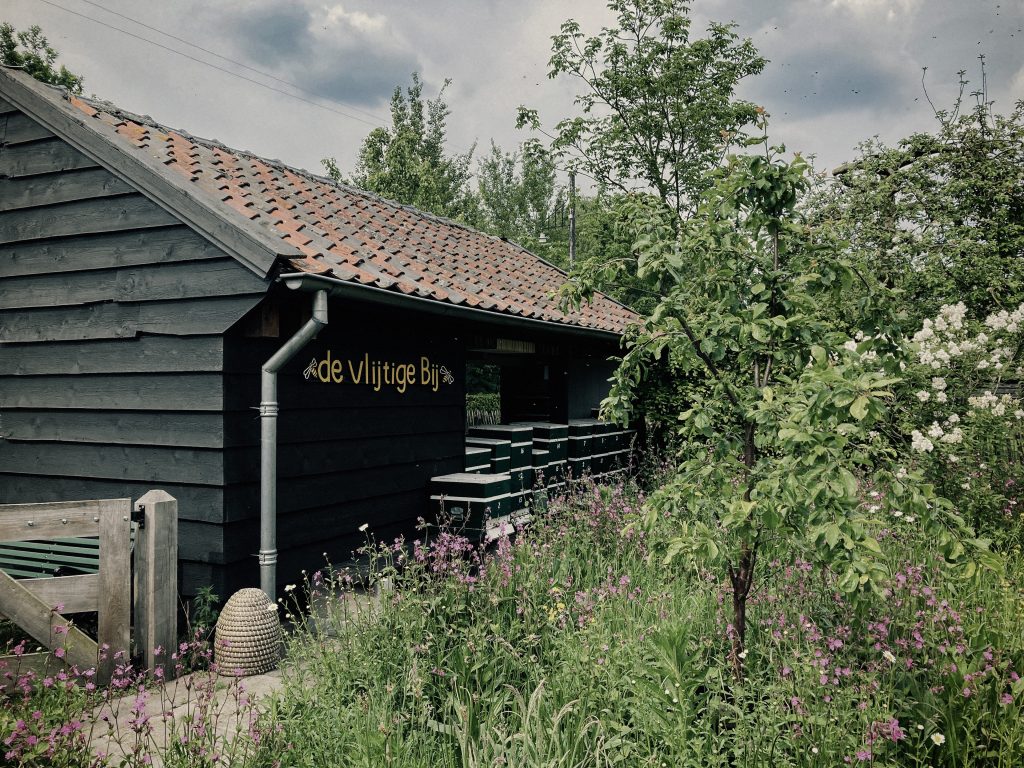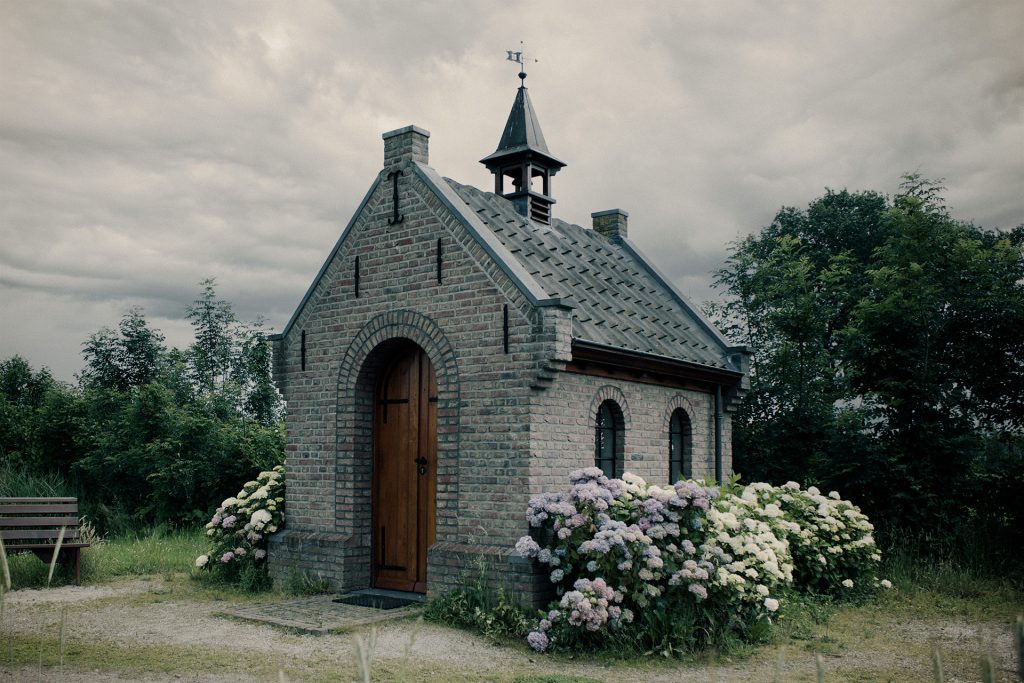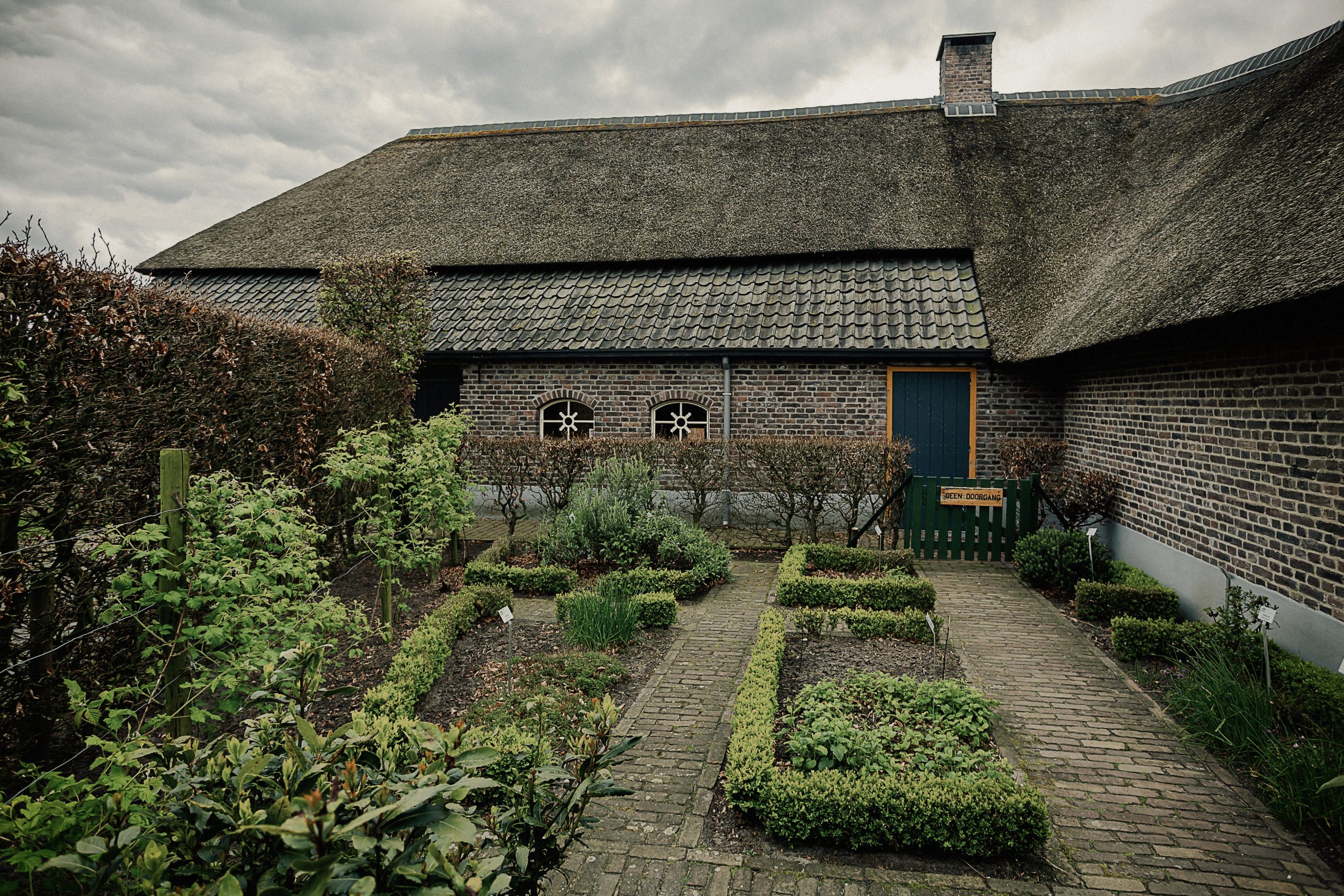
Gardens and fields
The gardens, yards and fields of the Boerenbondsmuseum are laid out as was customary in Southeast Brabant around 1900. They are processed as much as possible in the same way as they were back then and you will come across crops, flowers and plants that grew and flourished in this region at the time. Behind the short-gable farmhouse is a herb garden.
The yard of the main farm, as well as the lands behind it of the Boerenbondsmuseum, have been laid out as was customary in Southeast Brabant around 1900.
The sandy soils in Southeast Brabant were light and warm, which means that they warmed up quickly in the spring, but also dried out quickly. These poor soils were poor in nutrients and often had low natural fertility. The crops that were grown had to be adapted to the sandy soil. Some of the most common crops included:
- Rye: This was an important crop because it is resistant to poor soil conditions.
- Potatoes: Another important crop that grew well on the sandy soils and was a staple food for the locals.
- Oats and barley: These crops were often used for animal feed.
- Beets and beans: These crops helped improve soil fertility and were important for rotation.
- The process of sowing, planting and harvesting was largely manual and labor-intensive. The community played a huge role in the agricultural cycle, especially during busy periods such as the harvest season.
Technological developments were still limited in the early 1900s, although mechanization slowly began to increase in the late 19th and early 20th centuries. Nevertheless, agriculture in Southeast Brabant remained heavily dependent on human and animal labour.
The fields can be reached by turning right from the entrance, passing the N.C.B. building and then turning left onto the cart track.
Field Chapel
At the end of this cart track, you can visit the field chapel. This field chapel was founded in honor of St. Gerlachus, patron saint of cattle. The location of this field chapel is no coincidence: the chapel is surrounded by meadows and cattle.
Field chapels can be found everywhere in Brabant and Limburg, but Gemert takes the crown in this respect. This is because until the French period, Gemert was a Free State, under the knights of the Teutonic Order, which meant that the Protestant States General had no say. Every year in August, a sacred praise is dedicated to St. Gerlachus.
Petting zoo
A petting zoo is located on the grounds of the Boerenbondsmuseum: ‘t Prullekes Höfke (‘children’s garden’). Here children can meet and cuddle with all kinds of small animals, such as goats, bunnies and guinea pigs. But there are also various donkeys, geese, chickens and geese walking around. And also a real pot-bellied pig. In the petting zoo there is also a standard orchard of fruit trees. Each mixed farm had an orchard with different types of apples and pears.
There are also several vegetable gardens and herb gardens on the museum grounds where vegetables, flowers and plants can be seen that can be seen in the past but also today around farms.

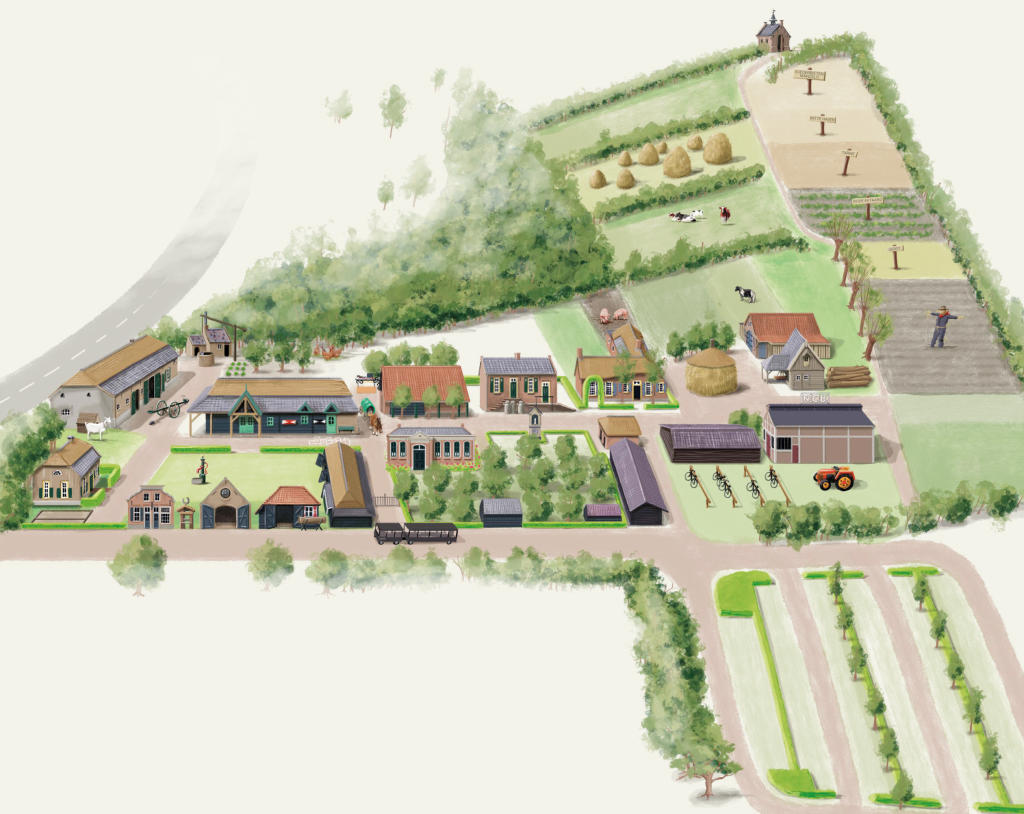
Discover more of the museum
Beehive

